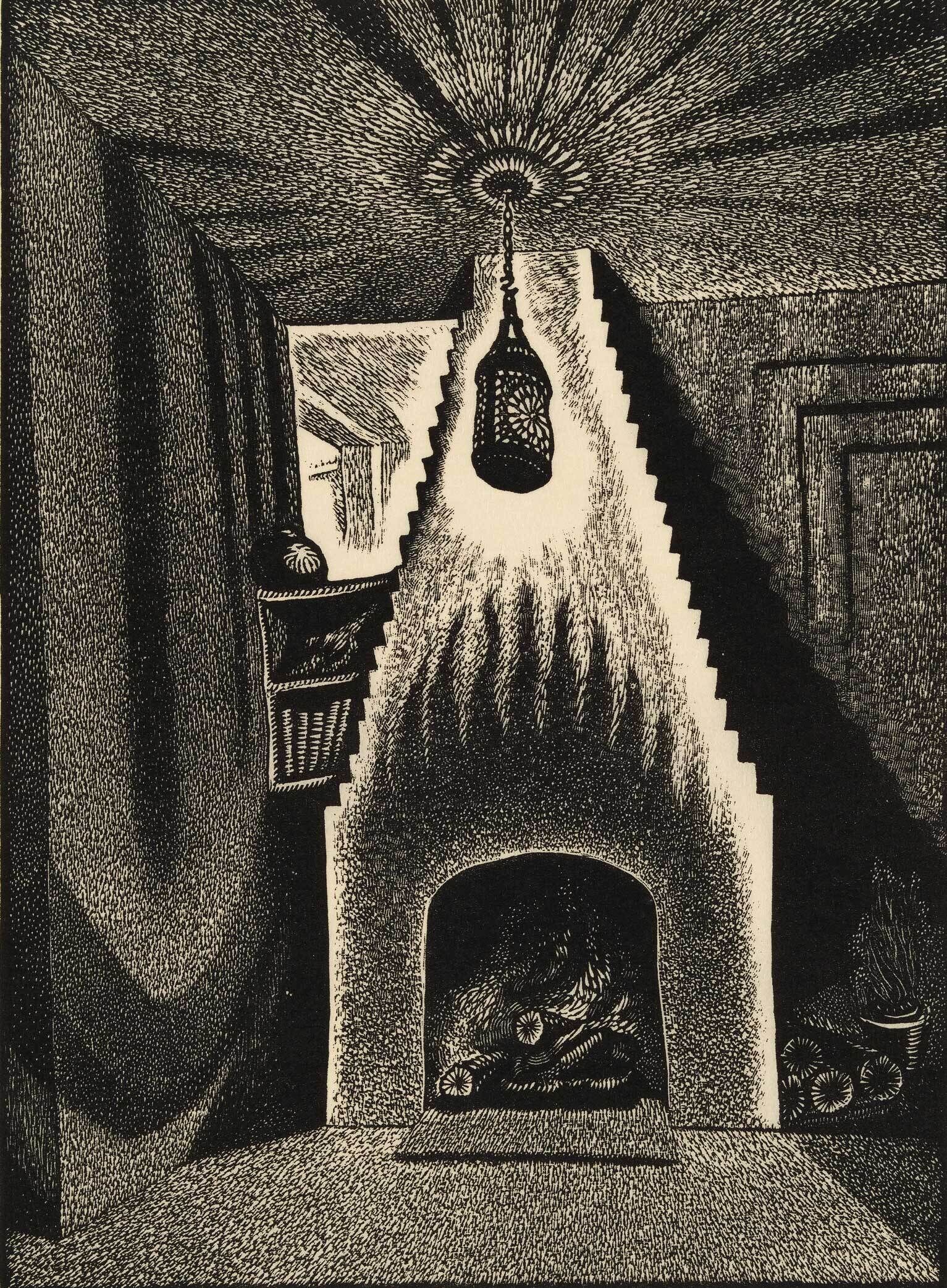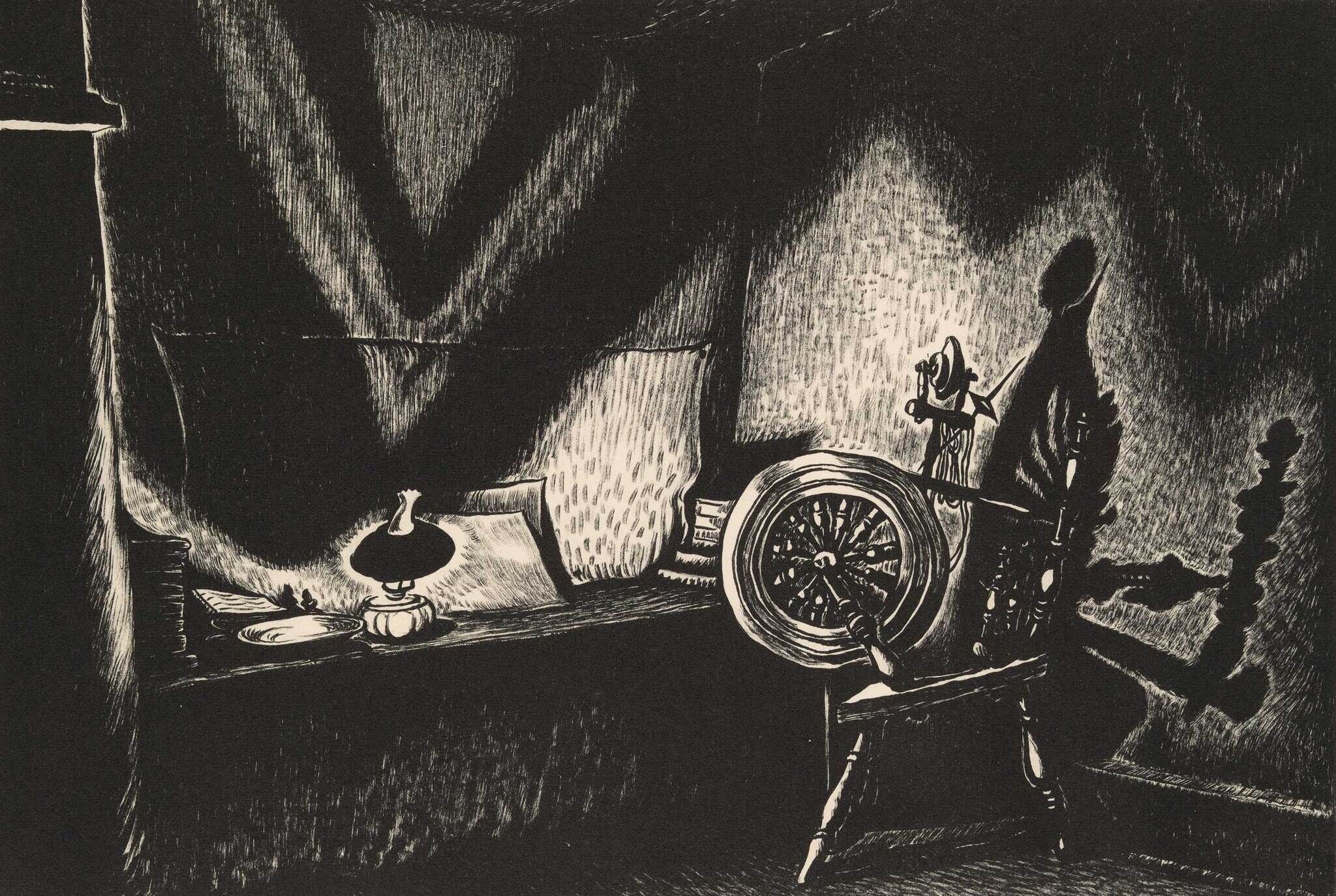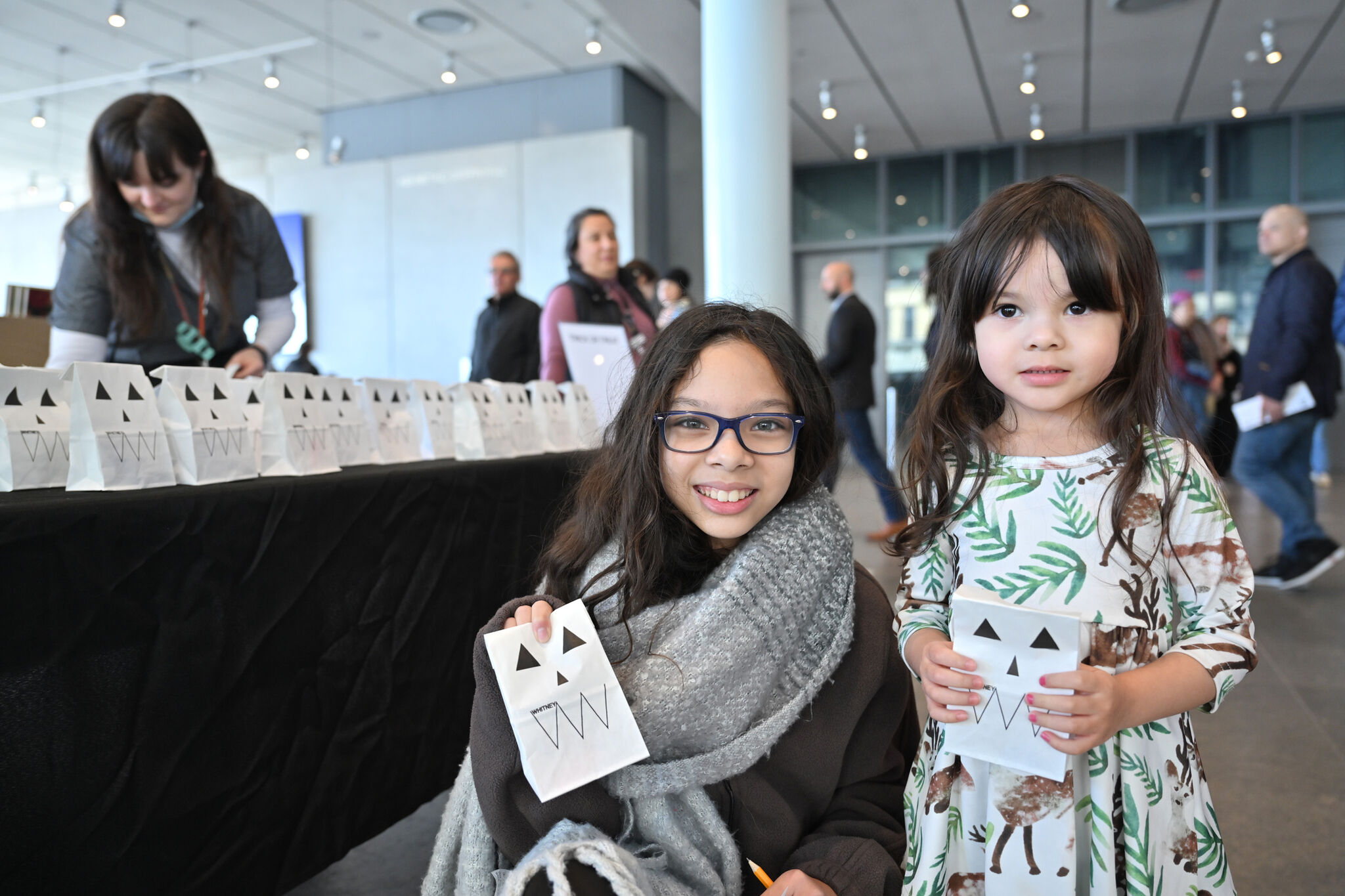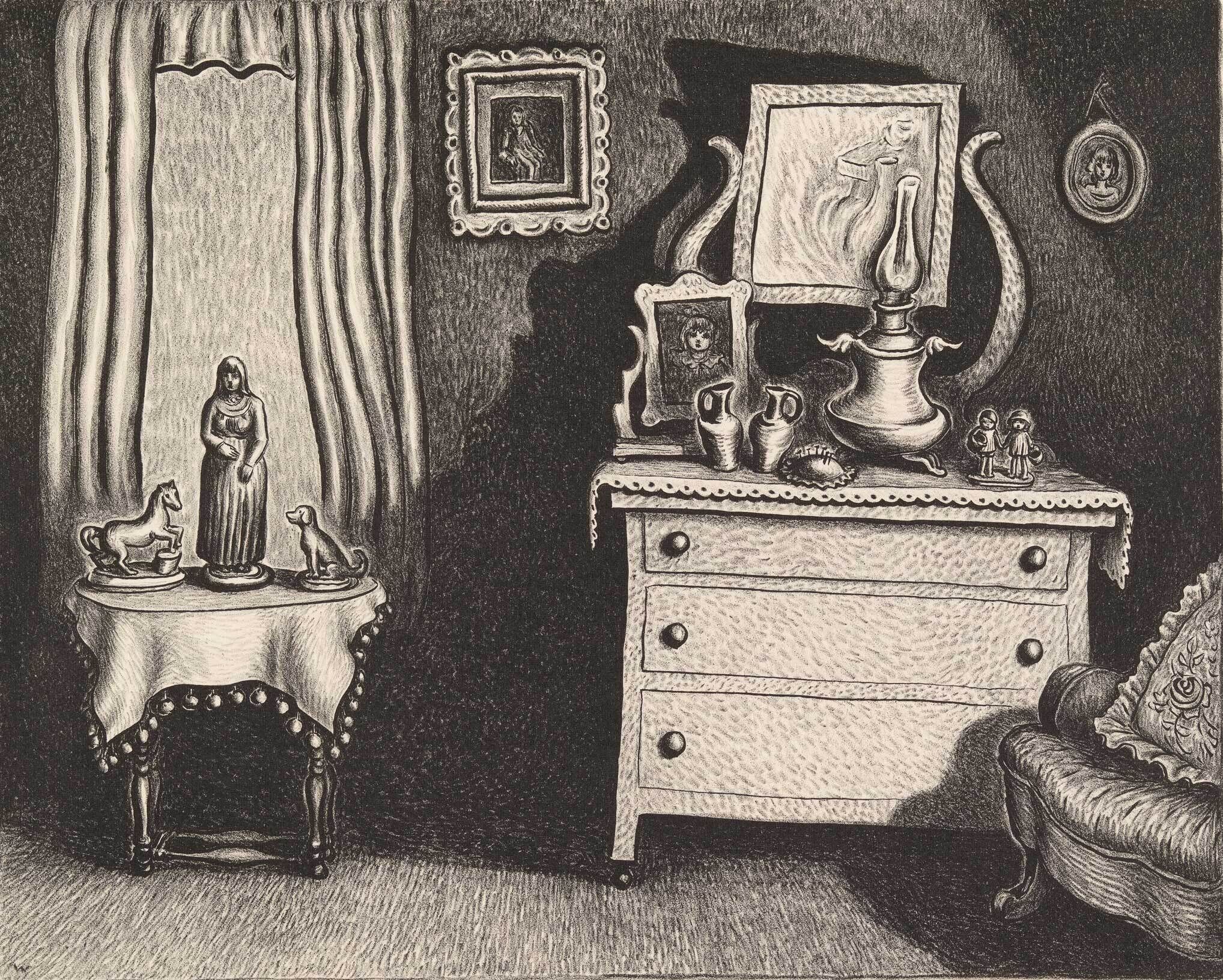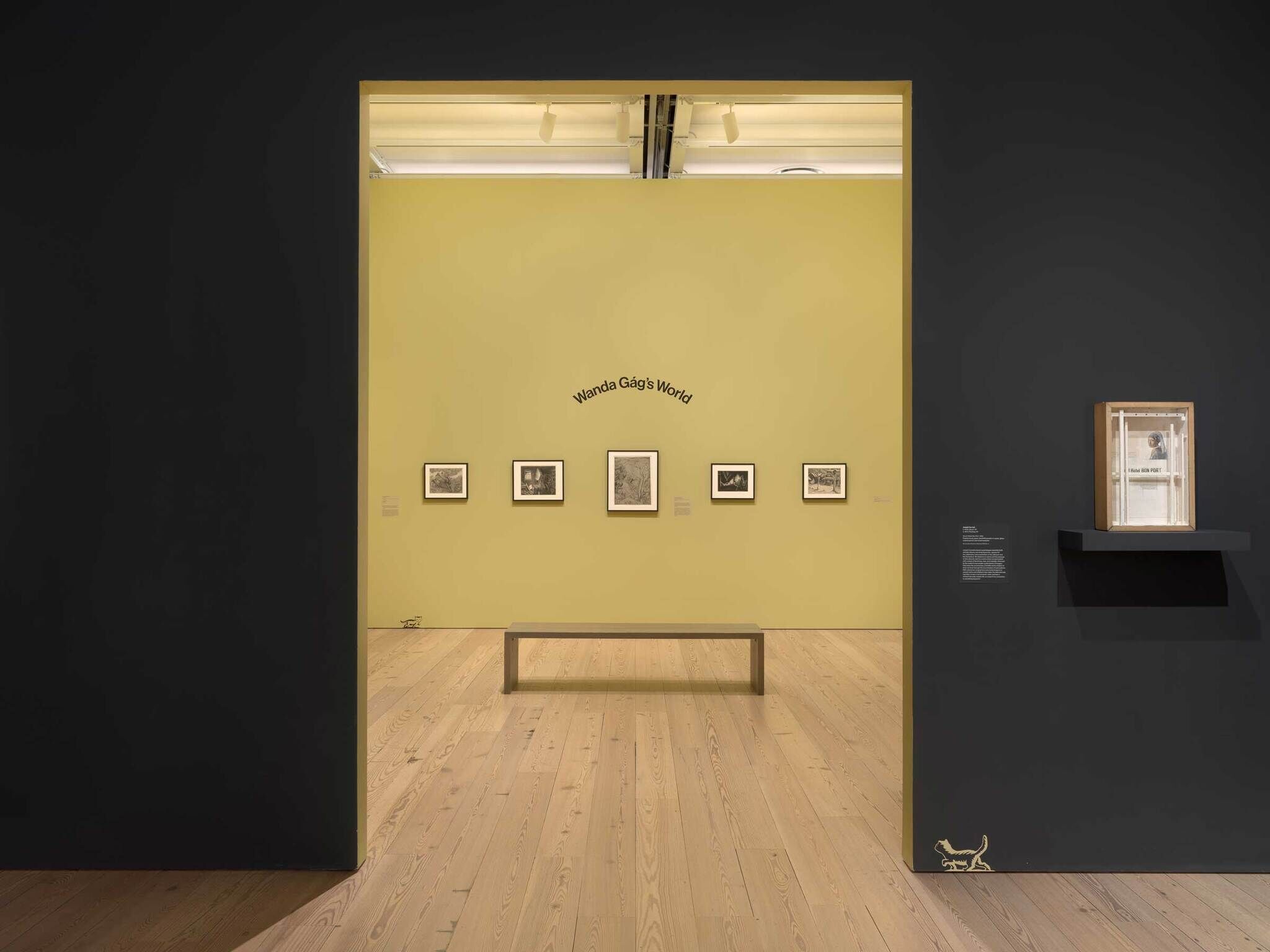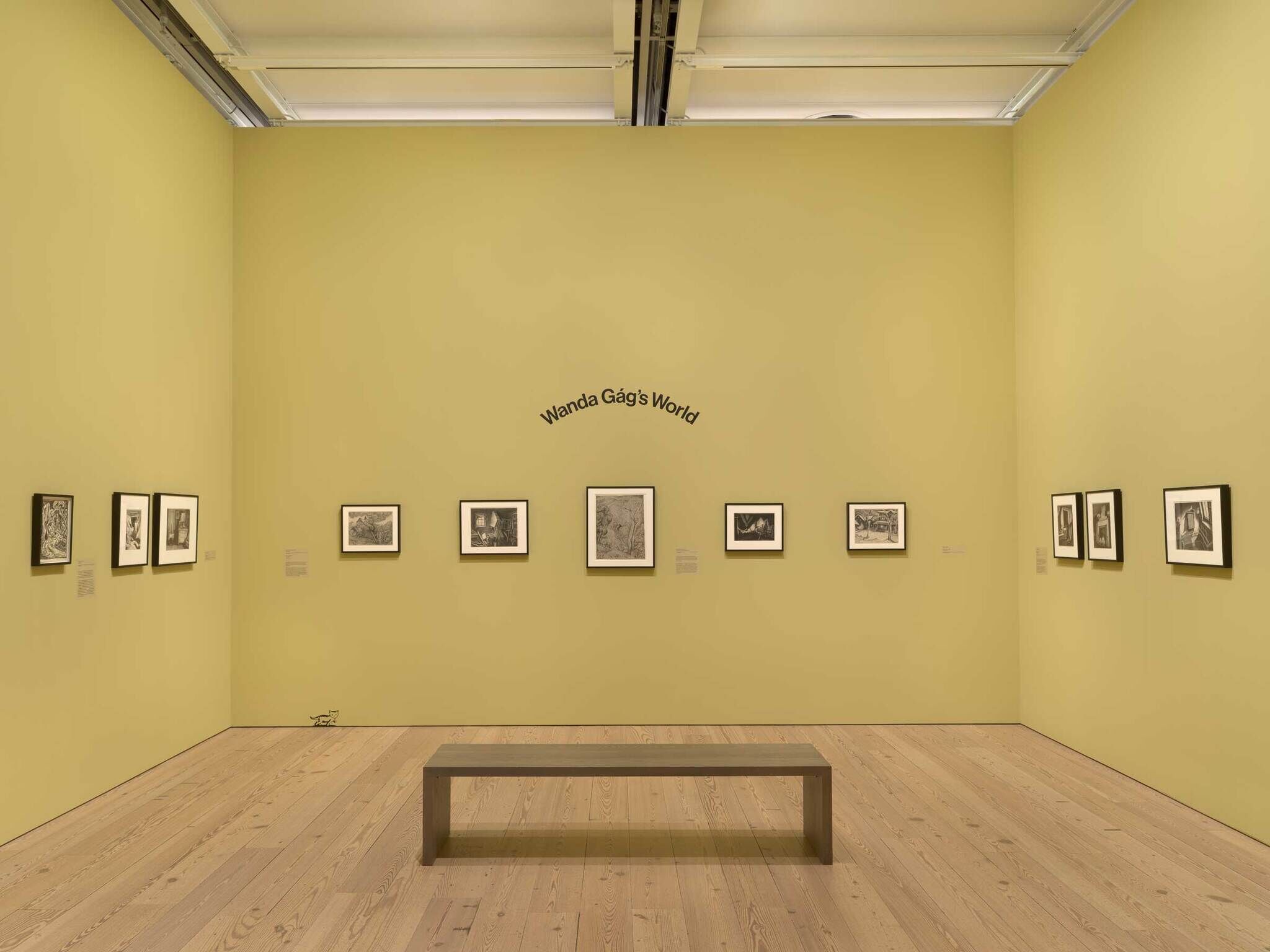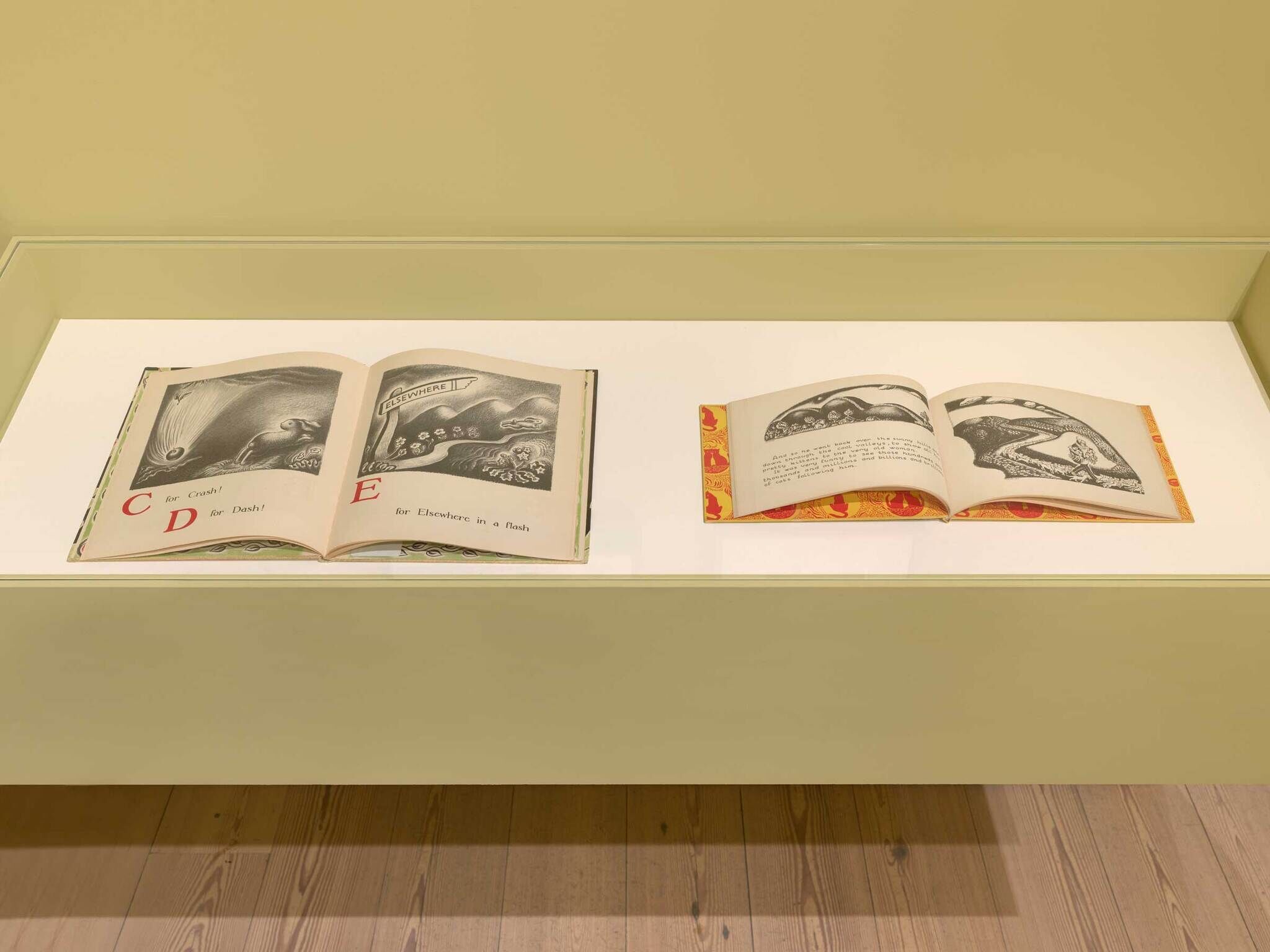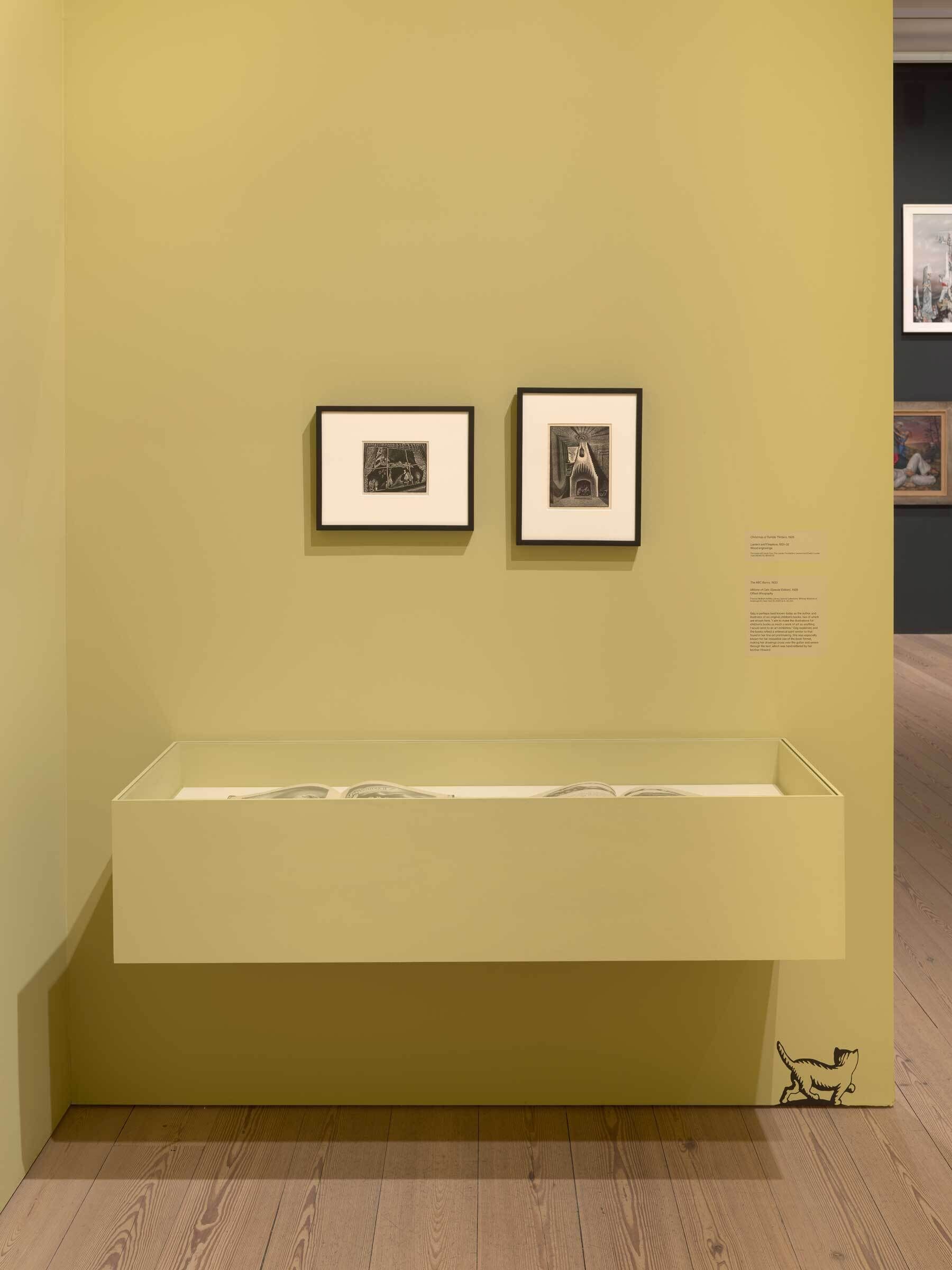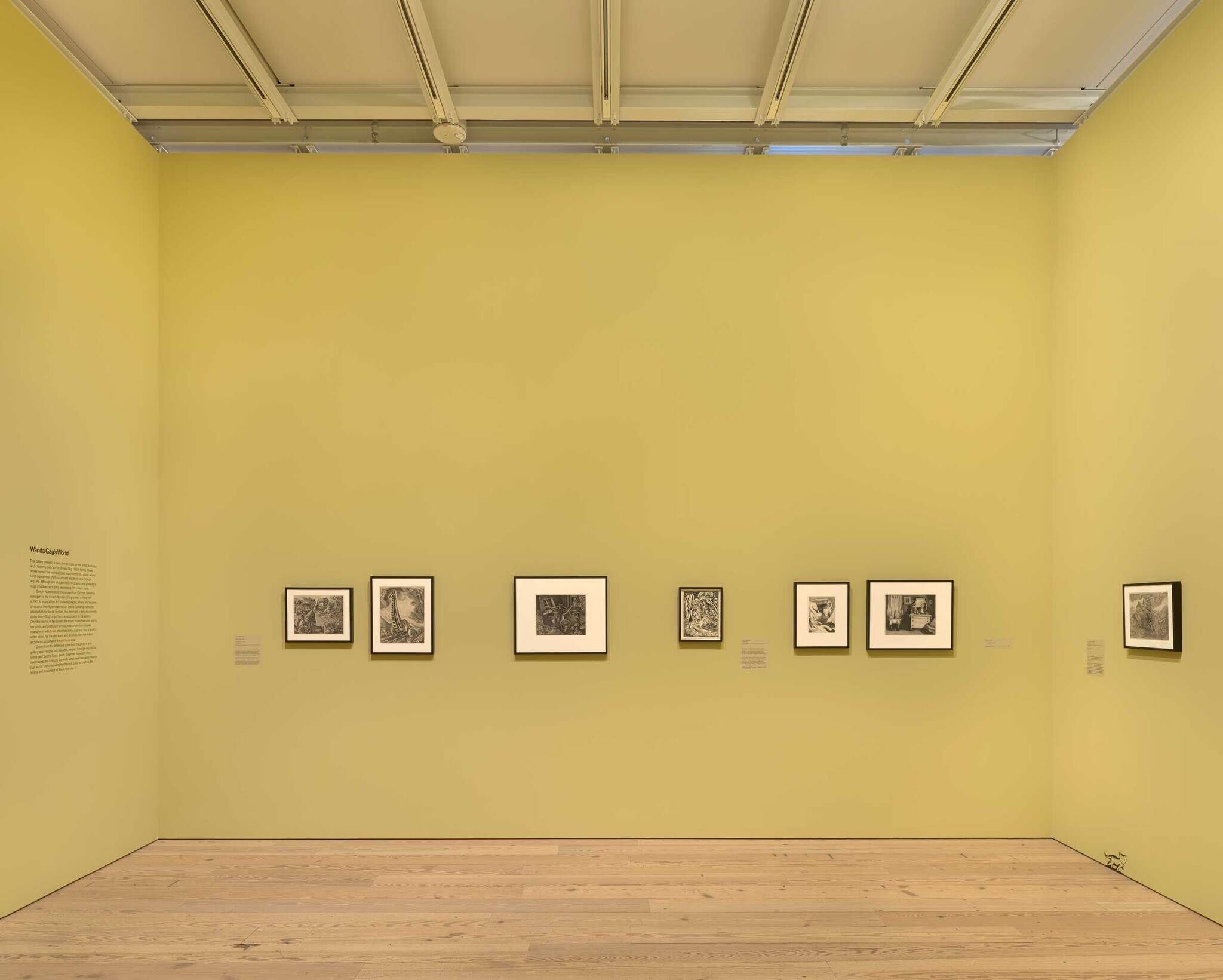Wanda Gág’s World
Mar 28–Dec 2, 2024
This exhibition presents a selection of prints by the artist, illustrator, and children’s book author Wanda Gág (1893–1946). These works record the world as Gág experienced it: a place where landscapes move rhythmically and inanimate objects hum with life. Although she also painted, the graphic arts offered her the most effective method for expressing this unique vision.
Born in Minnesota to immigrants from German Bohemia (now part of the Czech Republic), Gág arrived in New York in 1917 to study at the Art Students League, where she became a fixture of the city’s modernist art scene. Adhering neither to abstraction nor social realism—the dominant artistic movements at the time—Gág forged her own approach to figuration. Over the course of her career, she found modest success selling her prints and produced several popular children’s books, examples of which are presented in the show. Gág was also a prolific writer about her life and work, and excerpts from her letters and diaries accompany the prints on view.
Drawn entirely from the Whitney’s collection, the works in this exhibition span roughly two decades, ranging from the mid-1920s to the year before Gág's death. Together, these still lifes, landscapes, and interiors illuminate what the artist called “Wanda Gág world,” demonstrating her fervent quest to capture the feeling and movement of life as she saw it.
Wanda Gág’s World is co-curated by Roxanne Smith, Senior Curatorial Assistant, and Scout Hutchinson, Curatorial Fellow.
El mundo de Wanda Gág
Esta exposición presenta una selección de grabados de la artista, ilustradora y autora de libros infantiles Wanda Gág (1893-1946). Estos trabajos registran el mundo tal como lo experimentó Gág: un lugar donde los paisajes se mueven rítmicamente y donde los objetos inanimados rebosan de vida. A pesar de que también pintó, las artes gráficas le ofrecieron el método más efectivo para expresar esta visión única.
Nacida en Minnesota de padres provenientes de la Bohemia alemana (hoy República Checa). Gág llegó a Nueva York en 1917 para estudiar en la Art Students League, donde se convirtió en una figura clave de la escena modernista de la ciudad. Sin adherirse ni a la abstracción ni al realismo social, los movimientos artísticos dominantes de la época, Gág forjó su propio enfoque figurativo. A lo largo de su carrera tuvo un éxito modesto vendiendo sus grabados y produciendo varios libros infantiles que se exhiben en esta exhibición. Gág también fue una escritora prolífica sobre su vida y su trabajo, extractos de sus cartas y diarios acompañan los grabados expuestos aquí.
Seleccionados de la colección del Whitney, los grabados en esta exhibición abarcan casi dos décadas, desde mediados de los años veinte hasta el año que precedió su muerte. Al exhibirse en conjunto, estas naturalezas muertas, paisajes e interiores ilustran lo que la artista llamó “el mundo de Wanda”, evidenciando su febril búsqueda para capturar los sentimientos y movimientos de la vida tal como ella la veía.
El Mundo de Wanda Gág ha sido co-curada por Roxanne Smith, Asistente curatorial sénior junto con Scout Hutchinson, Curatorial fellow.
“There is, to me, no such thing as an empty place in the universe”
6
For Gág, the space surrounding an object was just as active as the object itself. Writing in her diary in 1929, she explained:
“I am still as deeply absorbed in the form of the atmosphere around objects as I was several years ago and I have tried this and that way of expressing this feeling. . . . There is, to me, no such thing as an empty place in the universe—and if Nature abhors a vacuum, so do I—and I am just as eager as nature to fill a vacuum with something—if with nothing else, at least with a tiny rhythm of its own, that is a rhythm created by its surrounding forms. . . . When a space can be as definite, as surely invested with volume and character as a tangible object—what is one going to do about it?”

